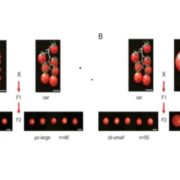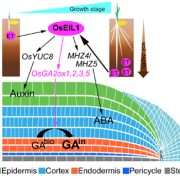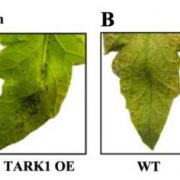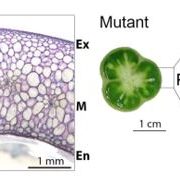A molecular framework for ethylene-mediated tomato fruit development
Huang et al. unravel the roles of ethylene in tomato fruit growth and ripening.
Background: Fruit development is an intriguing evolutionary strategy that functions in both seed protection and seed dispersal. Tomato (Solanum lycopersicum) has long been used as a model system to uncover mechanisms underlying fruit growth and ripening. The phytohormone ethylene serves as a central regulator of fruit ripening, but whether and how ethylene regulates tomato fruit growth remains elusive. The naturally occurring mutants that initially pointed to the roles of the transcription factors RIN and NOR in this fruit maturation show complete ripening cessation, but CRISPR/Cas9-generated rin and nor knockout mutants display much milder ripening inhibition, suggesting that the current model of the roles of RIN and NOR and their relationships with the ripening hormone ethylene need to be re-evaluated.
Question: Does ethylene regulate tomato fruit growth? Negatively or positively? What is the relationship between ethylene and ripening-related developmental factors? Does ethylene function downstream or upstream of these factors?
Findings: We uncovered four major findings: 1) Ethylene positively regulates fruit growth by inducing the accumulation of seed-derived auxin; 2) Multiple EILs (ETHYLENE INSENSITIVE3-Like proteins) and EBFs (EIN3-Binding F-box proteins) play both redundant and divergent roles in tomato; 3) During ripening, the ethylene signaling pathway involving EIN2 (ETHYLENE INSENSITIVE2)-EBF1-EILs directly activates the transcription of developmental genes RIN, NOR, and FUL1; 4) Genetic evidence showed that ethylene signaling intensity is intimately associated with the efficiency of achieving full ripeness, which may explain why climacteric fruits such as tomato usually exhibit an ethylene burst during ripening.
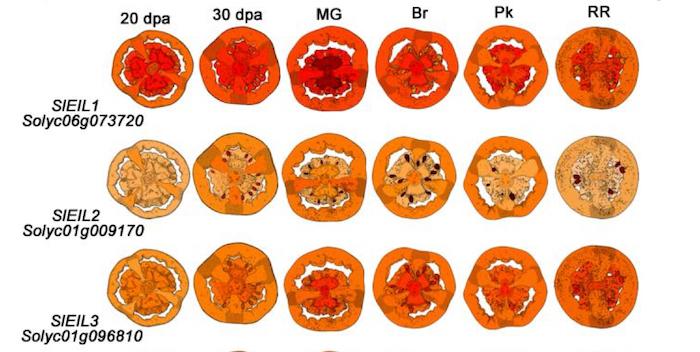
Next steps: As overexpressing RIN, NOR, or FUL1 only partially rescued the fruit ripening defect of slein2, we plan to examine whether this defect could be fully restored by simultaneously overexpressing RIN, NOR, FUL1, and/or other transcription factor genes. Moreover, the elaborate mechanism integrating ethylene and auxin signaling during fruit growth requires further investigation.
Wei Huang, Nan Hu, Zhina Xiao, Yuping Qiu, Yan Yang, Jie Yang, Xin Mao, Yichuan Wang, Zhengguo Li, and Hongwei Guo (2022). A molecular framework of ethylene-mediated fruit growth and ripening processes in tomato. https://doi.org/10.1093/plcell/koac146




